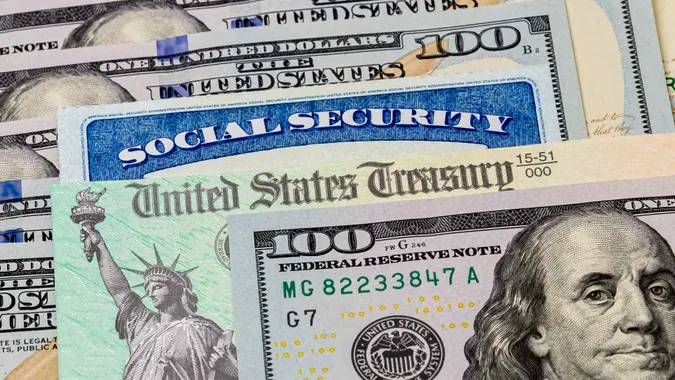How Can You Withdraw Money From a Retirement Account? 5 Ways To Know

Commitment to Our Readers
GOBankingRates' editorial team is committed to bringing you unbiased reviews and information. We use data-driven methodologies to evaluate financial products and services - our reviews and ratings are not influenced by advertisers. You can read more about our editorial guidelines and our products and services review methodology.

20 Years
Helping You Live Richer

Reviewed
by Experts

Trusted by
Millions of Readers
Saving for retirement is only part of the process of ensuring financial security during your golden years. The other part is planning how and when to withdraw funds from your retirement savings accounts. The right withdrawal strategy helps ensure that your funds last throughout your lifetime in the most efficient way possible.
In terms of rules, the most important ones involve when to start making voluntary withdrawals and when to start making required ones. With few exceptions, you must wait until age 59 ½ to withdraw from a 401(k) or IRA to avoid an early withdrawal penalty.
When you hit a certain age, you will face a required minimum distribution (RMD), which means you must begin withdrawing funds from your 401(k) or IRA or face a penalty. In 2024, the RMD is age 72 (or 73 if you reach age 72 after December 31, 2022).
Beyond that, your decision on when and how to withdraw retirement funds is up to you, based on your financial situation, retirement goals, health and other factors. Here are five retirement account withdrawal strategies you should know about.
Also see the biggest withdrawal mistakes affecting your nest egg.
Withdrawal Rule of 4%
According to this rule, you should spend no more than 4% of your investments during the first year of retirement and then adjust the total every subsequent year to account for inflation. The idea is to guarantee a steady income for 25 years. But the rule has evolved since being devised three decades ago.
Investment company Blackrock recommends withdrawing 4% during your first year of retirement and then an additional 2% in subsequent years. For example, if you have $1 million saved for retirement, you would withdraw $40,000 during your first year in retirement, $40,800 the second year, $41,616 the third year and so on.
Interest-Only Income
This option might apply if you hold fixed annuities in your retirement accounts and want to take withdrawals before age 72. According to the Teachers Insurance and Annuity Association of America, you would withdraw only the interest from the accounts during these years and wait to withdraw the principle when the RMD kicks in at age 72 or 73. The strategy works best as you transition from your job or are waiting on other sources of income to begin, such as Social Security.
Fixed-Dollar Withdrawals
As the name suggests, this option involves taking out a fixed dollar amount over a specific period of time. As Blackrock explained, you might decide to withdraw $40,000 each year and then reassess the dollar amount at the end of a five-year period. The advantage is that it provides predictable annual income, though it doesn’t protect against inflation. Also, depending on the dollar amount you choose, you could erode your principal.
Systematic Withdrawal Plan
With a systematic withdrawal plan, you only withdraw the income (e.g. dividends or interest) created by the underlying investments in your portfolio. This leaves your principal intact and can help you avoid running out of money. The main disadvantage is that you won’t withdraw the same amount every year, which makes it difficult to plan ahead. Another risk is that your withdrawals might not keep up with inflation.
Withdrawal Buckets Strategy
This strategy involves dividing your retirement savings into three buckets — short-term, intermediate-term and long-term — and making withdrawals based on when those buckets serve the most useful purpose. Here’s how it works, according to a blog from Vanguard:
- The short-term bucket should contain money you can withdraw and live on for the next three to five years. This typically includes safe and liquid assets such as cash, cash equivalents and short-term bonds.
- The intermediate bucket should contain money to cover expenses for the following five to 10 years. For this bucket, consider longer-term bonds and certain value stocks.
- The long-term bucket should hold investments that will continue to grow throughout your retirement, including growth stocks and long-term bonds.
More From GOBankingRates
 Written by
Written by  Edited by
Edited by 

























